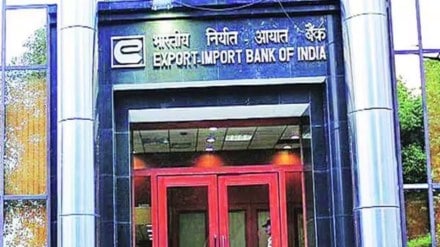In recent years, India has made significant strides in expanding its influence in Africa, emerging as the second-largest provider of credit to the continent. With a focus on infrastructure development, healthcare, and other key sectors, India’s efforts aim to catch up with China, which has long been a dominant player in Africa.
India’s Credit to Africa:
In an exclusive conversation with Financial Express Online, Harsha Bangari, the managing director of India’s Export Import Bank said the bank plays an important role in the country’s “economic diplomacy.”
According to Ms Bangari India has opened 195 project-based lines of credit in Africa worth around US$12.8 billion, triple the number in its own region, reflecting the country’s commitment to fostering stronger ties with the resource-rich continent.
Over the last decade, India has extended approximately US$32 billion in credit to 42 African nations, accounting for 38 percent of its total credit distribution. These funds, channeled through India’s Export Import Bank, support a wide range of projects, including healthcare, infrastructure, agriculture, and irrigation.
Project Selection Process:
India’s decision to support a particular African government is determined by the Indian government itself. The process involves close collaboration with the Exim Bank, which assesses the needs of the borrower government and identifies suitable projects. To a question on the selection process, she says that Indian missions in African countries play a vital role in facilitating these partnerships by maintaining relationships with local governments and identifying areas where India’s expertise can be deployed effectively.
Diverse Project Portfolio:
India’s credit lines of $12.8 billion cover a broad spectrum of projects that align with the expertise of Indian companies. According to the managing director of India’s Export Import Bank “the focus areas include traditional sectors like power, transportation, infrastructure, social housing, water management, healthcare, defense, and renewable energy. These initiatives cater to the specific needs of African nations, ranging from energy projects to IT parks and medical centers.”
Comparison with China:
While India has made significant progress in Africa, it still trails behind China in terms of overall influence. China’s early foray into Africa’s mineral resources, such as lithium and bauxite, has solidified its position as a key partner. Moreover, China’s investments in infrastructure development and strategic resource acquisitions have allowed it to maintain a strong foothold on the continent.
India’s Strategy:
Recognizing the importance of Africa’s potential, India has intensified its efforts to deepen economic and diplomatic ties with the continent. Prime Minister Narendra Modi’s government has prioritized Africa, evident in the establishment of numerous embassies and consulates. India has also hosted high-profile summits, such as the Voice of Global South summit, to engage African countries and advocate for the interests of developing economies. By positioning itself as a representative of the Global South, India seeks to address the challenges faced by developing nations and establish itself as a prominent player on the world stage.
Looking Ahead:
India’s engagement with Africa represents a long-term vision, with a focus on anticipating future needs and opportunities. Foreign Minister Dr S Jaishankar has recently talked about the importance of preparing for the future and understanding where India should be in 2047. As Africa grapples with economic challenges and global geopolitical shifts, India aims to further strengthen its foothold on the continent and build enduring partnerships that benefit both nations.
While China’s dominance remains formidable, India’s growing presence, bolstered by its diplomatic initiatives, showcases a determination to forge stronger bonds with African nations. The evolving dynamics between India and China in Africa will continue to shape the continent’s economic and geopolitical landscape in the coming years.
